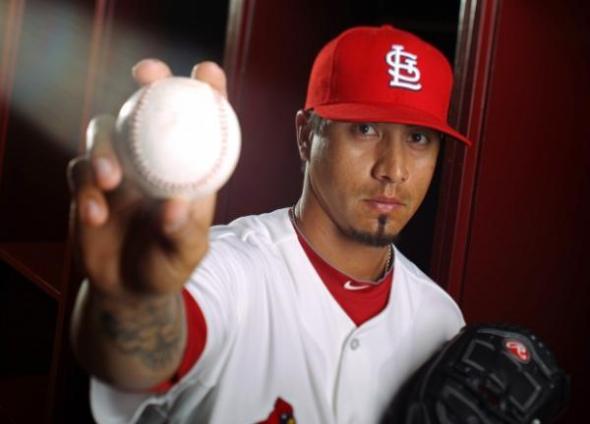When Machado was unexpectedly promoted last season, he didn't waste any time demonstrating that he belonged. In the fifth inning of his first game on August 9, he tripled to deep right-center field. He also added a single in his next at-bat. But he followed up his debut with an even better effort the next day, when he hit the first two home runs of his career -- a solo shot in the fifth and a three-run bomb in the sixth. He's got plenty of power in his swing, and it's scary to see how easily the ball flies off his bat.
A couple days later, Machado homered again, his third in his first four games. It was unlikely that he would continue slugging at that blistering pace, and things eventually slowed down. He sprinkled in some hits here and there, and he ended the month of August hitting .243/.260/.471 -- obviously not a great slash line. But one thing he did consistently was provide solid defense at third base. In an August series against the Red Sox, Machado made several strong defensive plays, including this game-ending diving grab to secure a 5-3 win on August 15:
On September 7, Machado homered for the first time in almost a month in a loss to the Yankees. After starting September with a stretch of a few multi-hit games, Machado was batting .293/.304/.525 after that loss. Unfortunately, that was the best his numbers would look for the rest of the season, though he wasn't done contributing. On September 12 against the Rays, Machado made one of the best and smartest defensive plays of the season when he faked a throw to first base and caught a runner sloppily rounding third:
The savvy play would have been fantastic for any third baseman, let alone a 20-year-old still learning the position. And if that weren't enough, Machado also singled in the bottom of the ninth and scored the winning run on Nate McLouth's walk-off single. The very next day, Machado singled in the winning run in the 14th inning to give the Orioles another 3-2 win over the Rays.
In a September 26 blowout win over the Blue Jays, Machado had his second two-homer game of the season. A couple days later, he knocked in two runs, including the go-ahead home run in a 4-3 win over Boston.
After going hitless in his final four games, Machado finished the regular season hitting .262/.294/.445 with a .317 wOBA. Again, that's not very good, but considering the team's starting shortstop, J.J. Hardy, finished with a .290 wOBA in 2012, it doesn't look quite as bad. Plus, there's no reason why Machado shouldn't perform better over the course of a full season, especially after getting his feet wet for a couple months.
Still, as you may have noticed, the Orioles, remarkably, headed to the postseason to face the Rangers in the AL wild card one-game play-in. Aided by strong pitching and timely hitting, the O's prevailed, 5-1. Machado played a part with an RBI single in the ninth to give the O's a little more cushion:
In the next round, the O's fell in five games to the Yankees, but Machado did homer in the third game of the series. In 19 postseason at-bats, he had only three hits. But it's not like the rest of the Orioles offense was much better. In those six games, the offense combined to hit just .195/.236/.270, the worst slash line of all 10 playoff teams.
-----
In about two months of baseball, Machado, in my opinion, exceeded early expectations. I didn't think the Orioles would promote him until 2013, and yet there he was, contributing to a playoff team. He was also a joy to watch on the defensive end and made both smart and athletic plays.
But while there's not necessarily much pressure on him to be great just yet, the Orioles didn't bring in much offensive help this offseason. From top to bottom, the O's lineup is decent, but it doesn't have much elite talent. Adam Jones and Nick Markakis are very good, but they're not superstars. Chris Davis has plenty of power, but he doesn't get on base enough. And even though Matt Wieters is a fantastic catcher who most teams would love to have, his bat hasn't lived up to his prospect-level hype. Maybe Nolan Reimold and Brian Roberts will help. It's not impossible that one or both will stay healthy, but it's certainly improbable, particularly in Roberts's case.
Basically, the Orioles need more out of Machado at the plate very soon, even if Buck Showalter and Dan Duquette don't admit it publicly. By opting against signing someone like Nick Swisher, the O's are gambling on guys like Machado and Reimold. That may not be such a bad idea, but it could very well fail in 2013.








